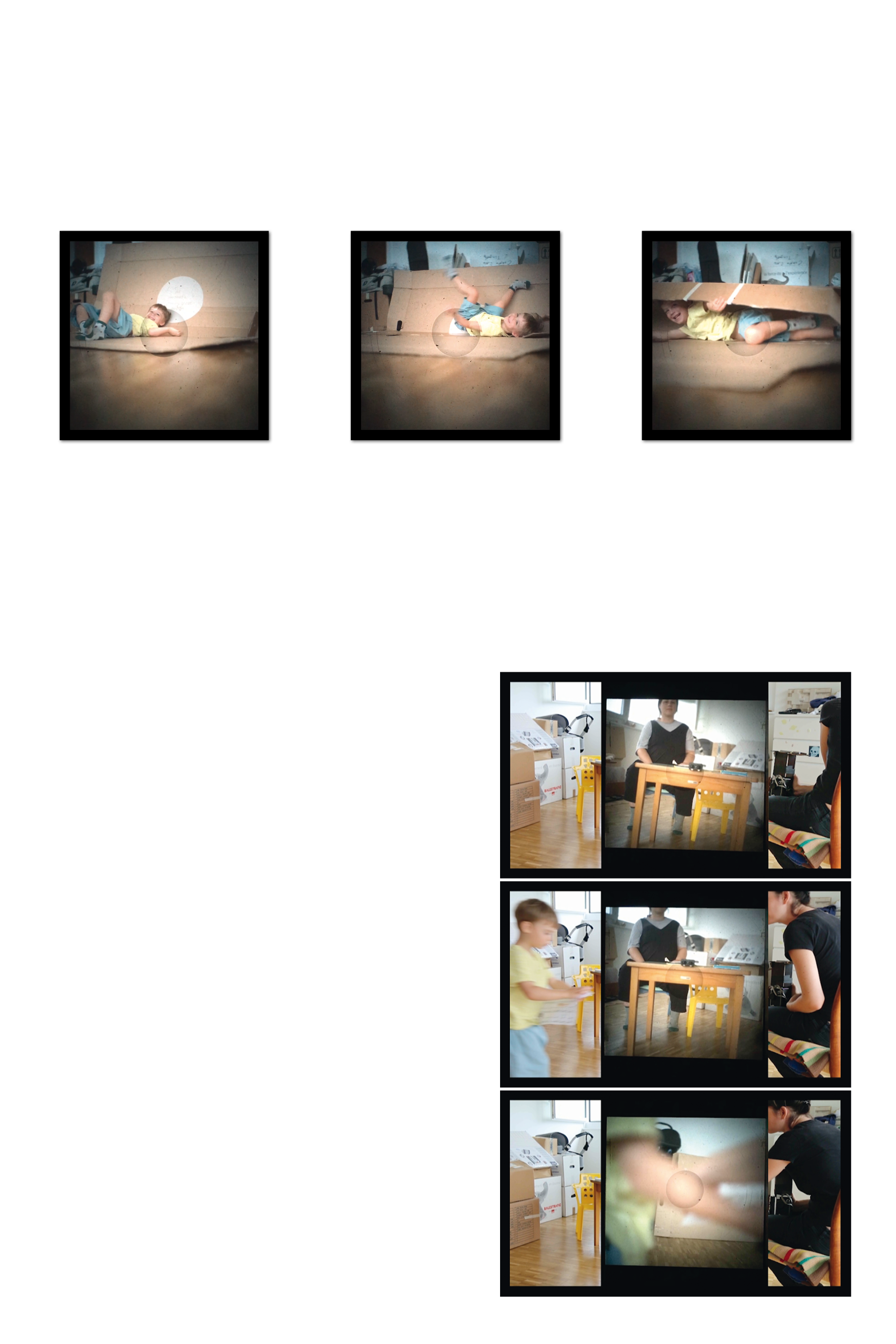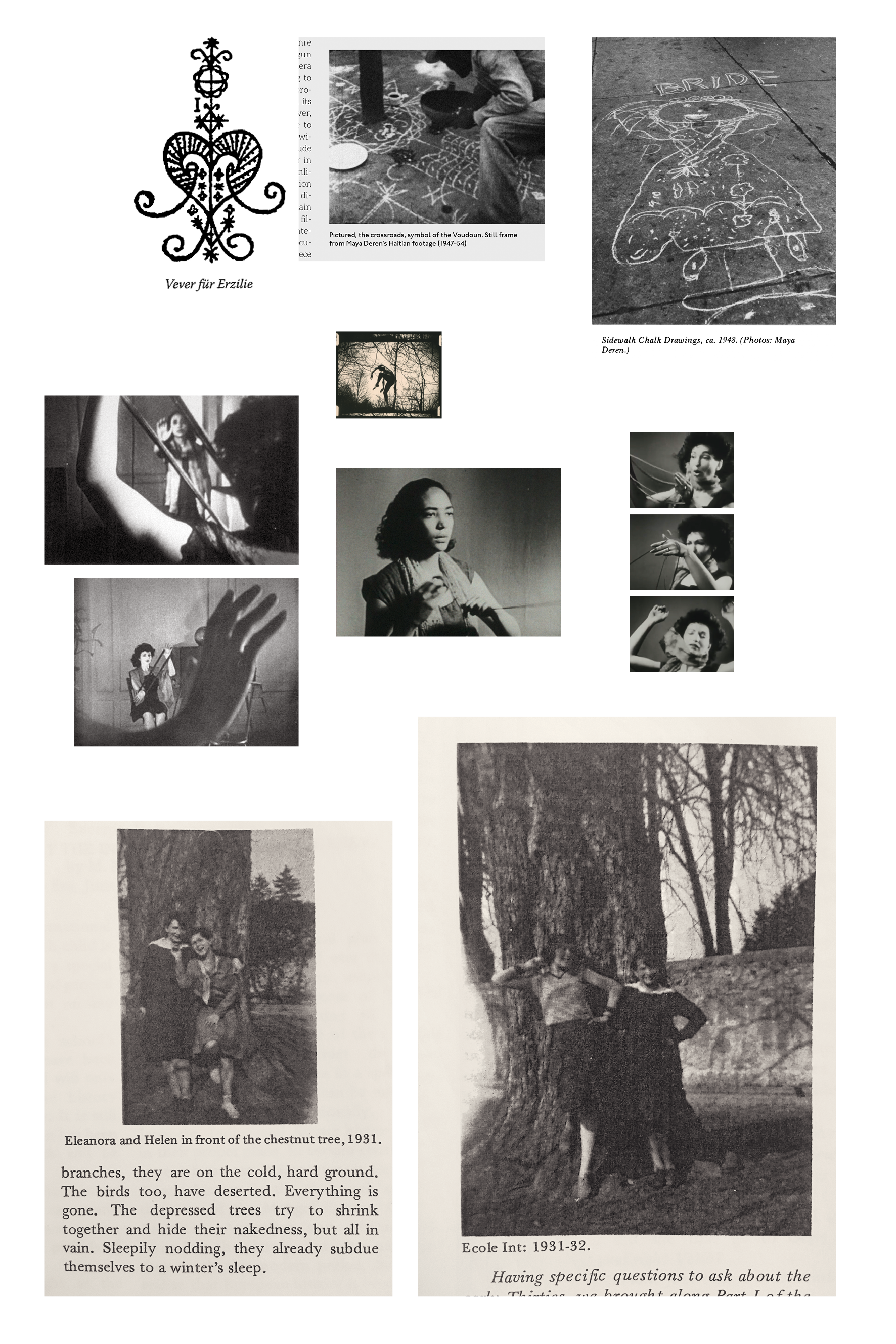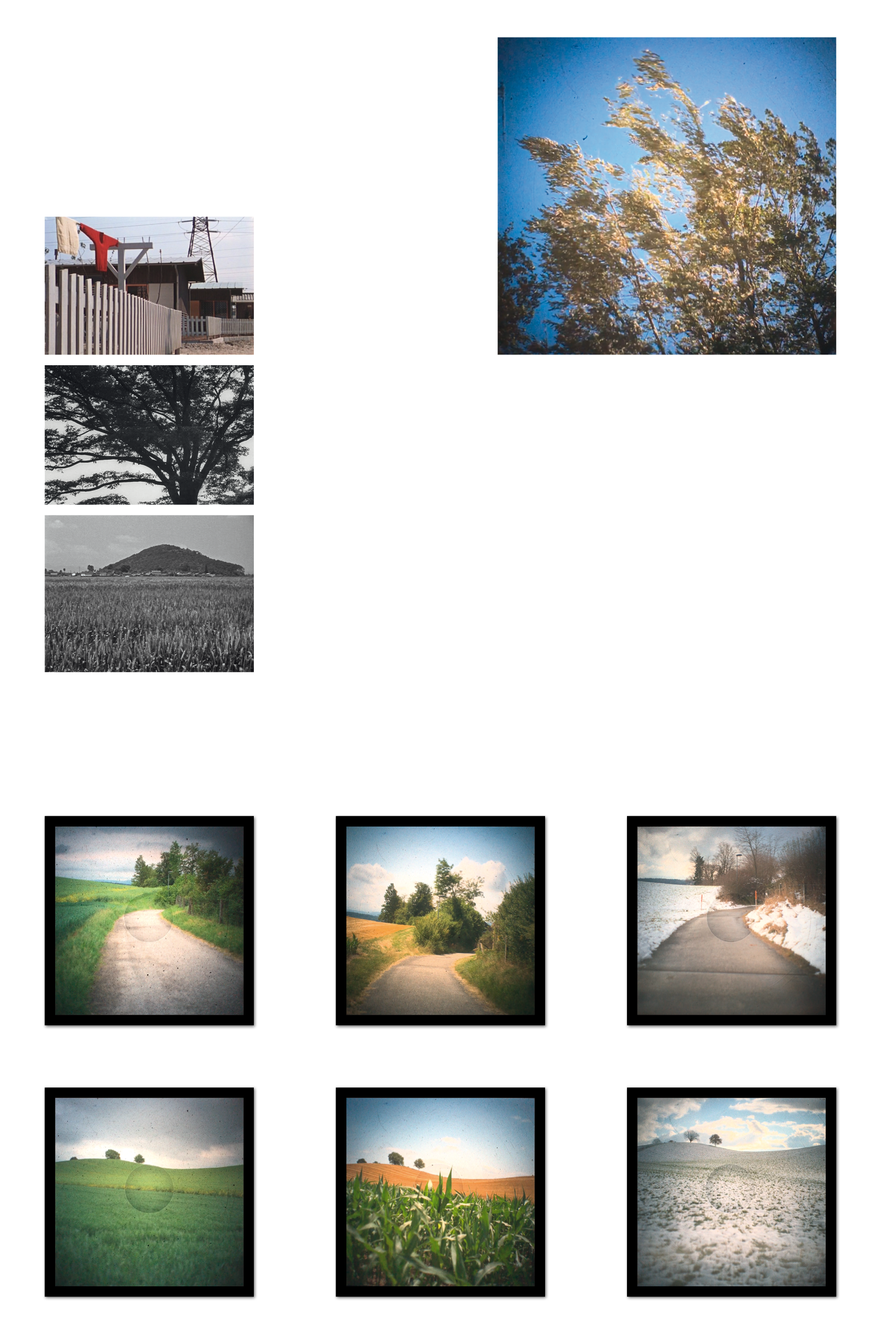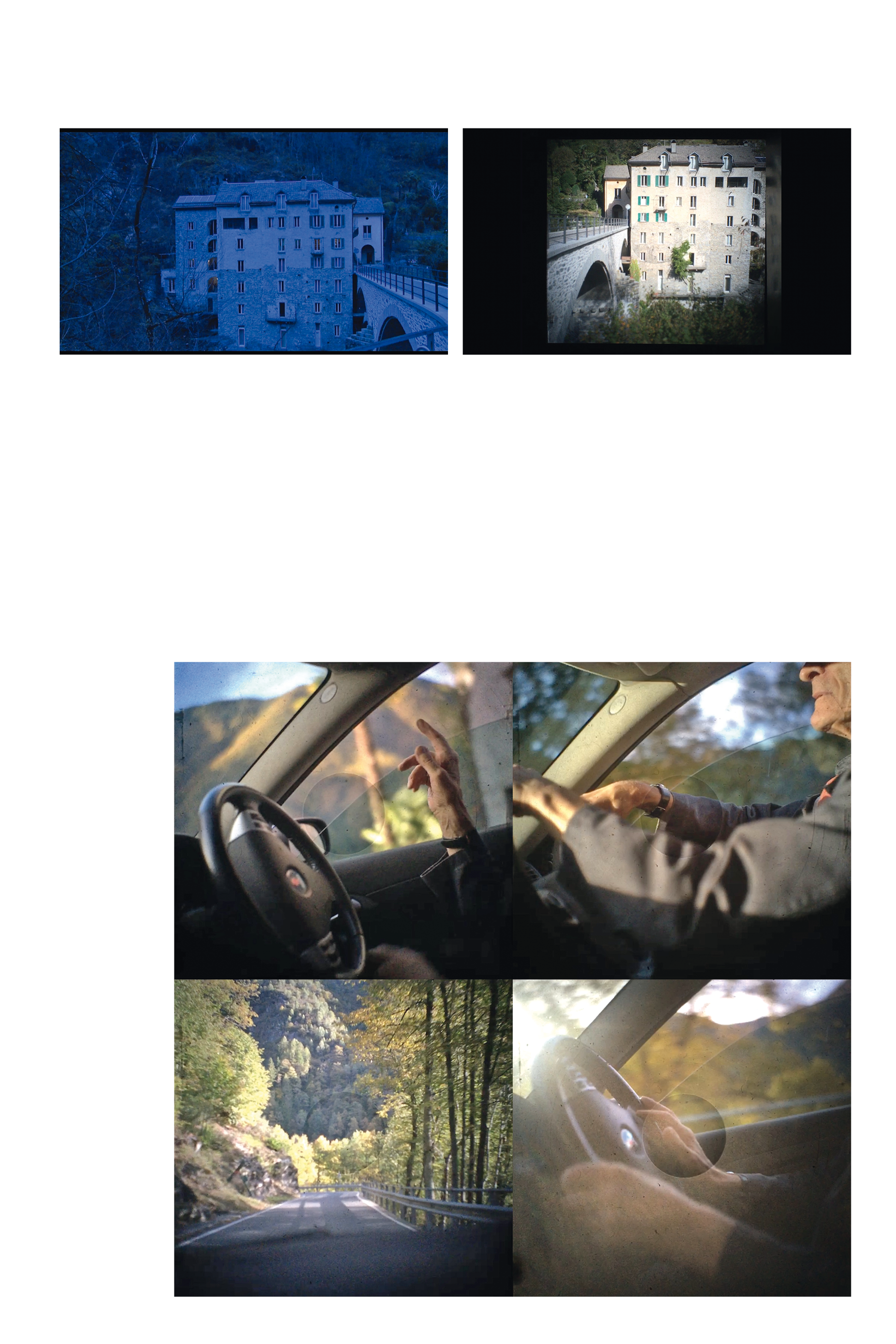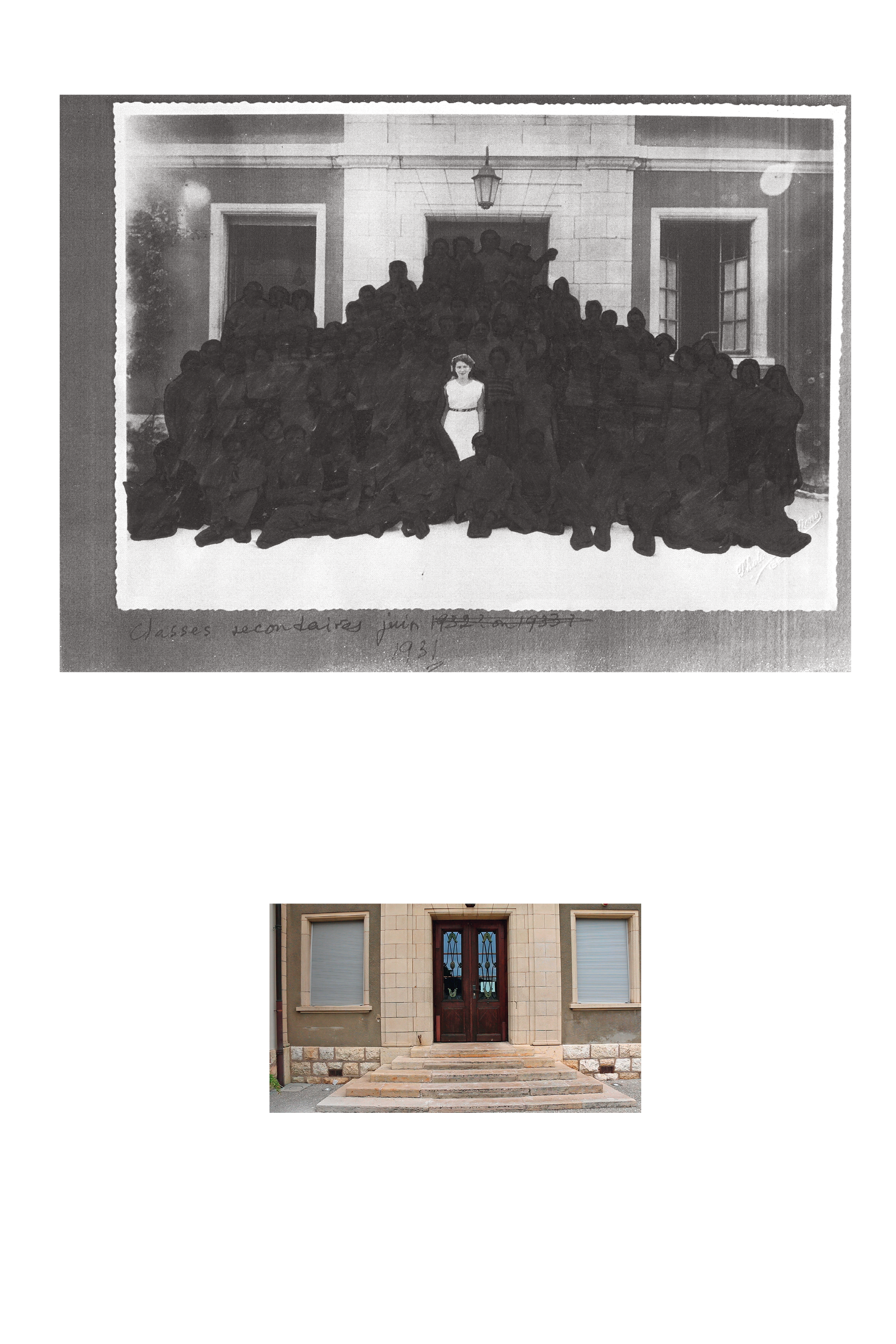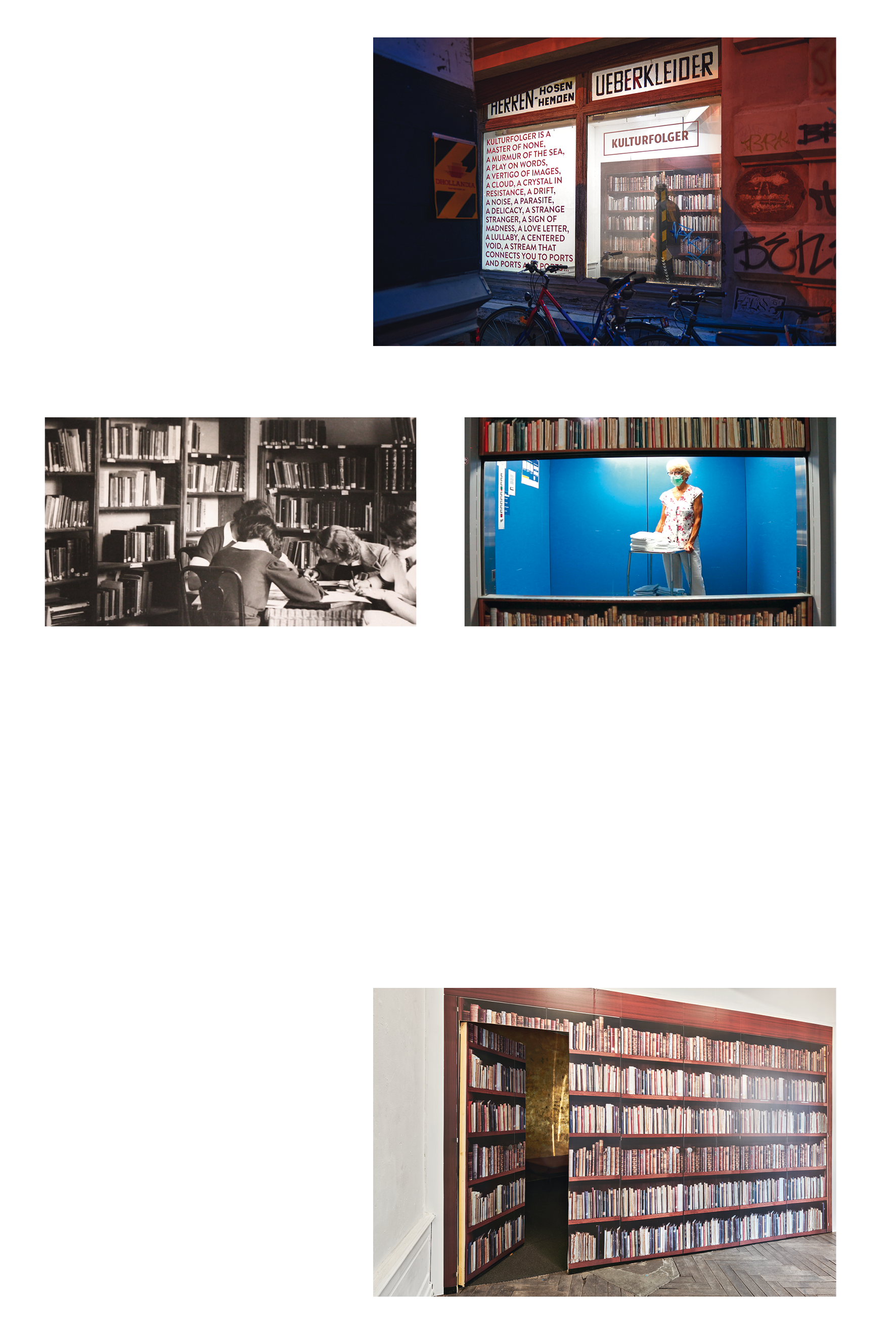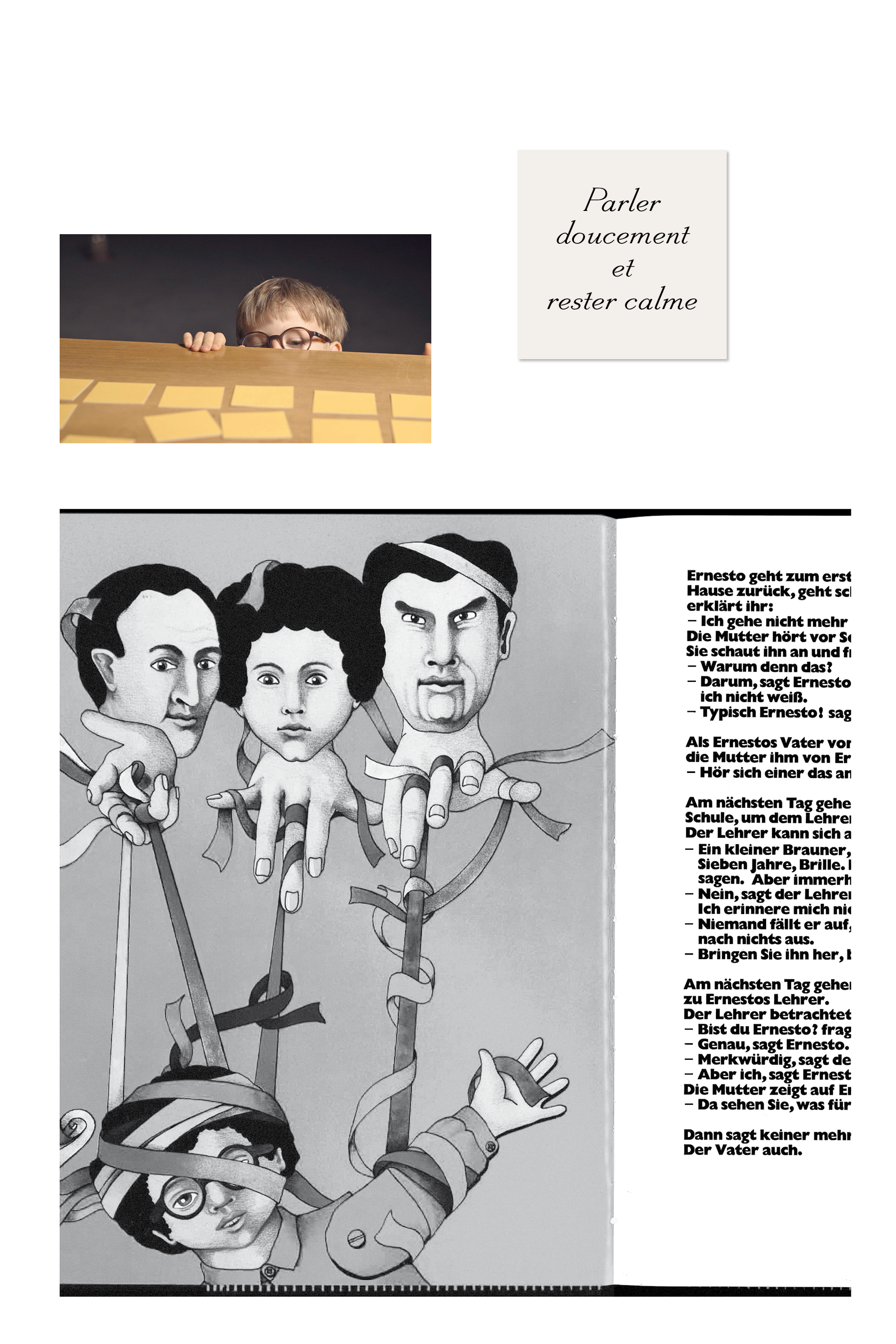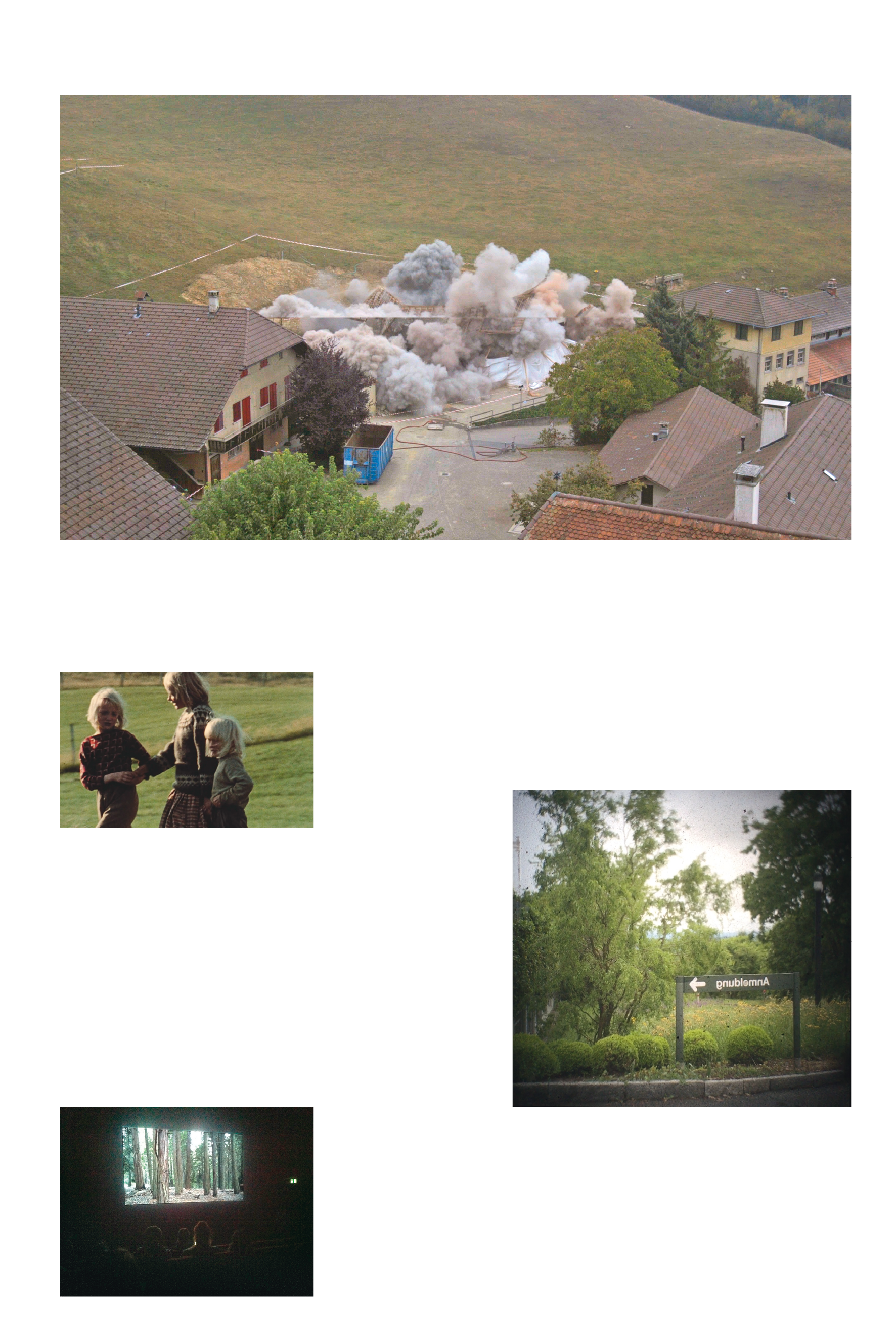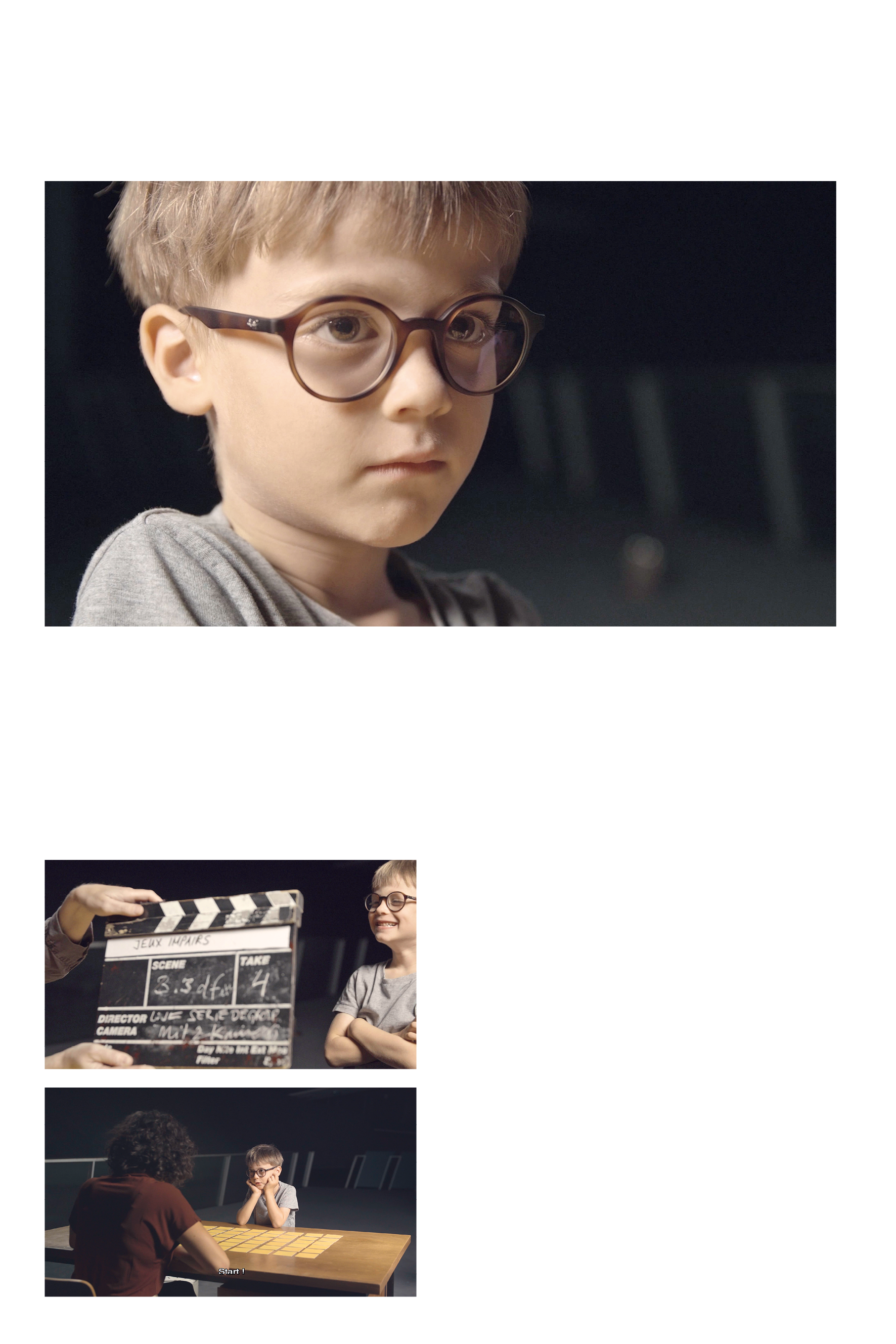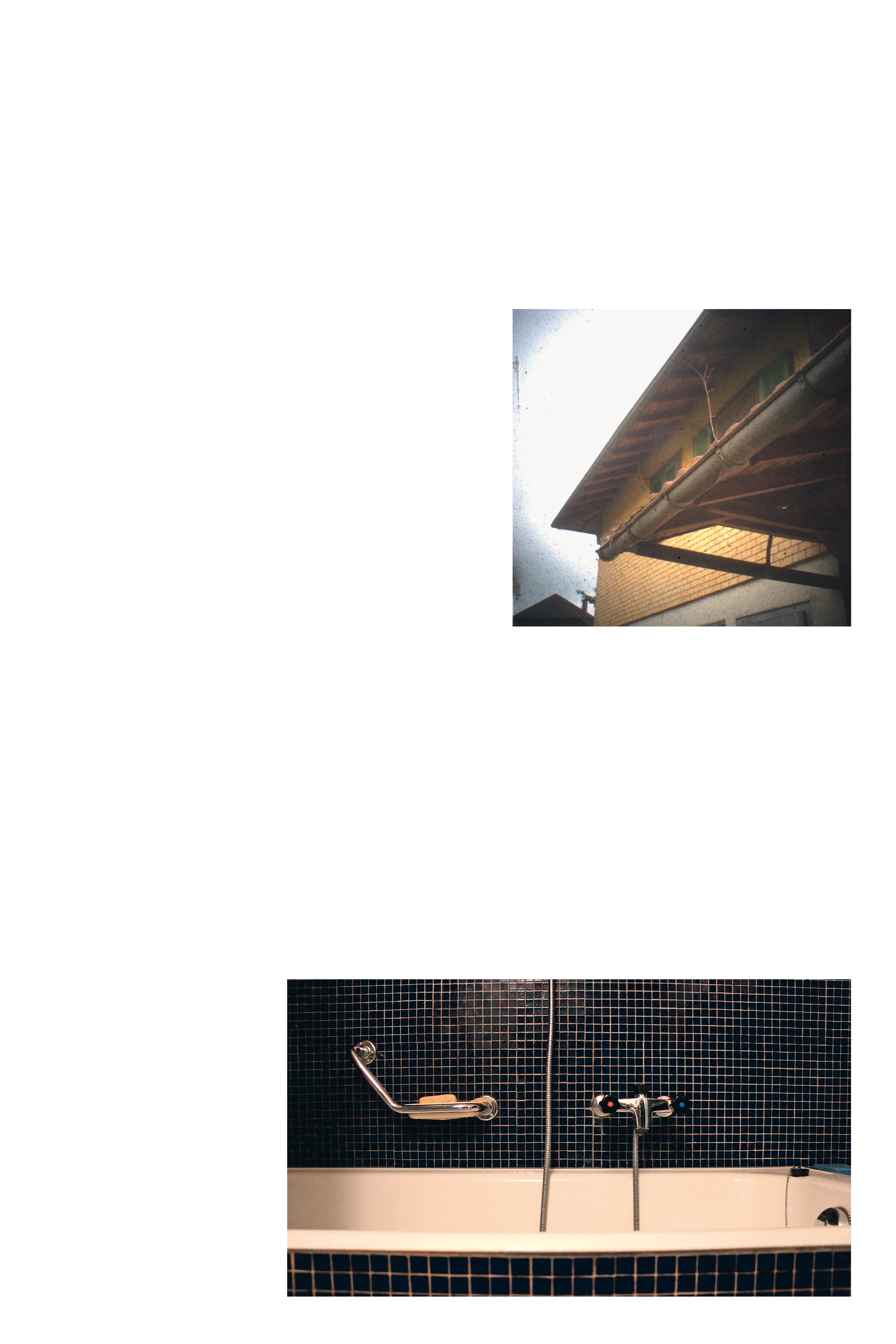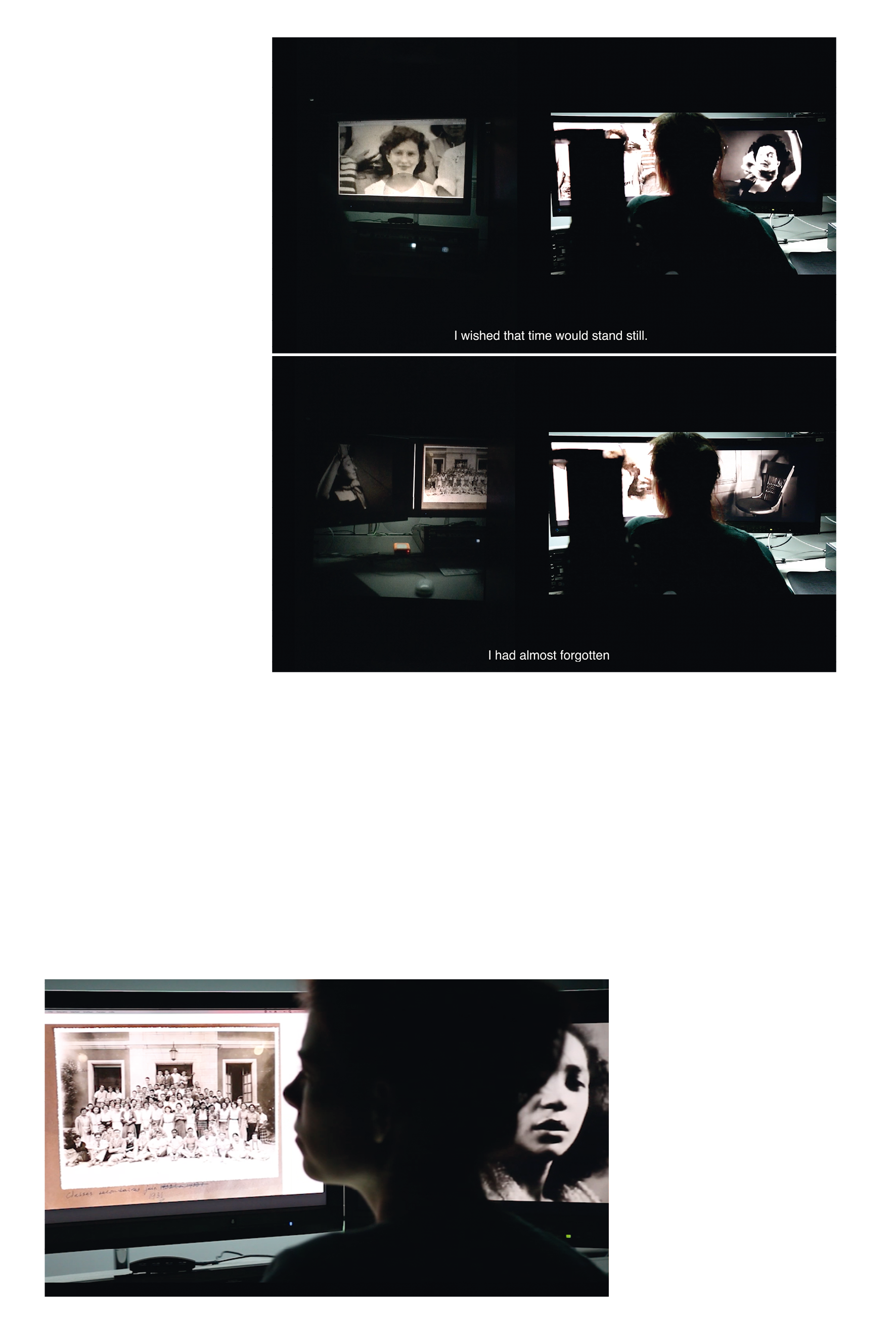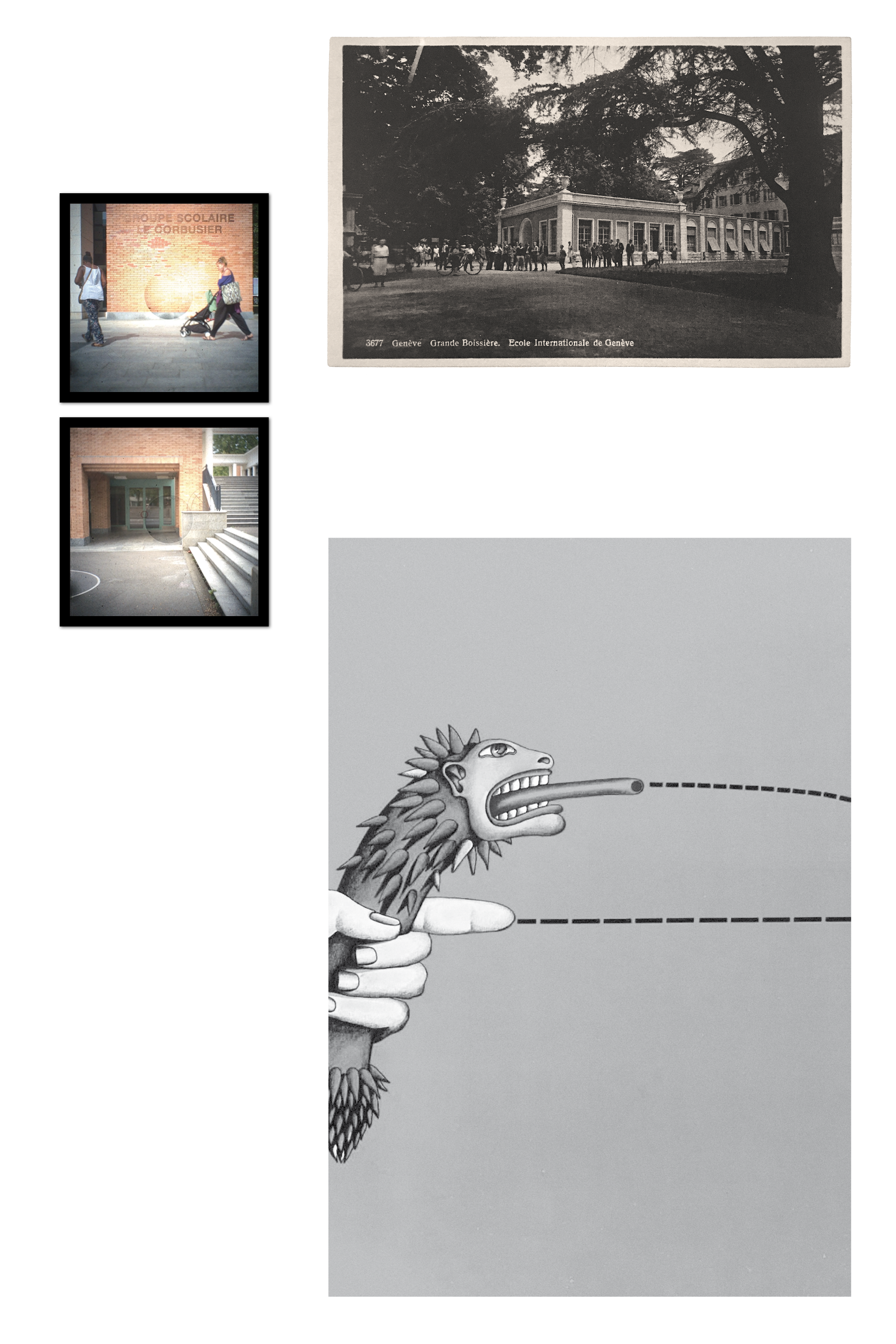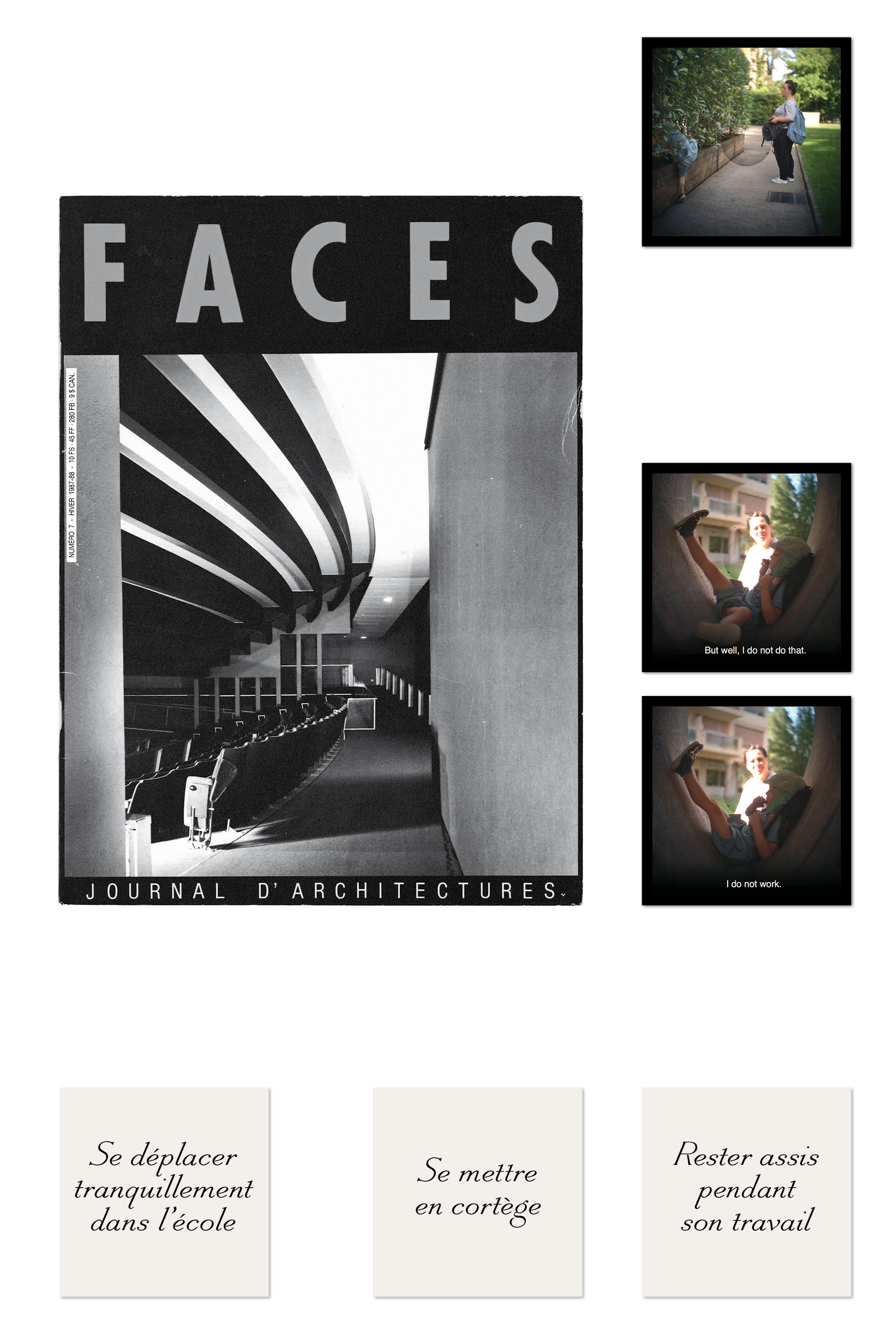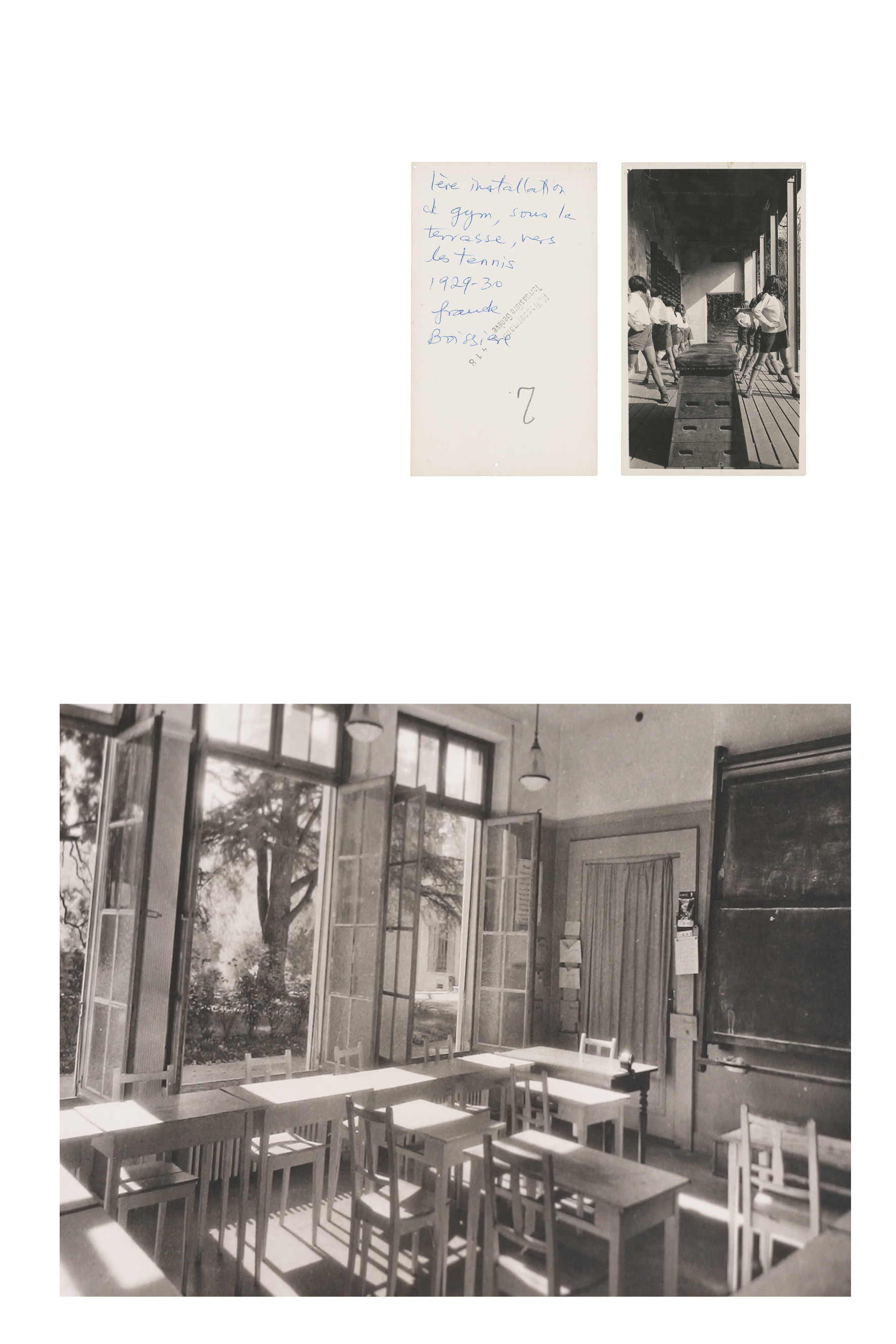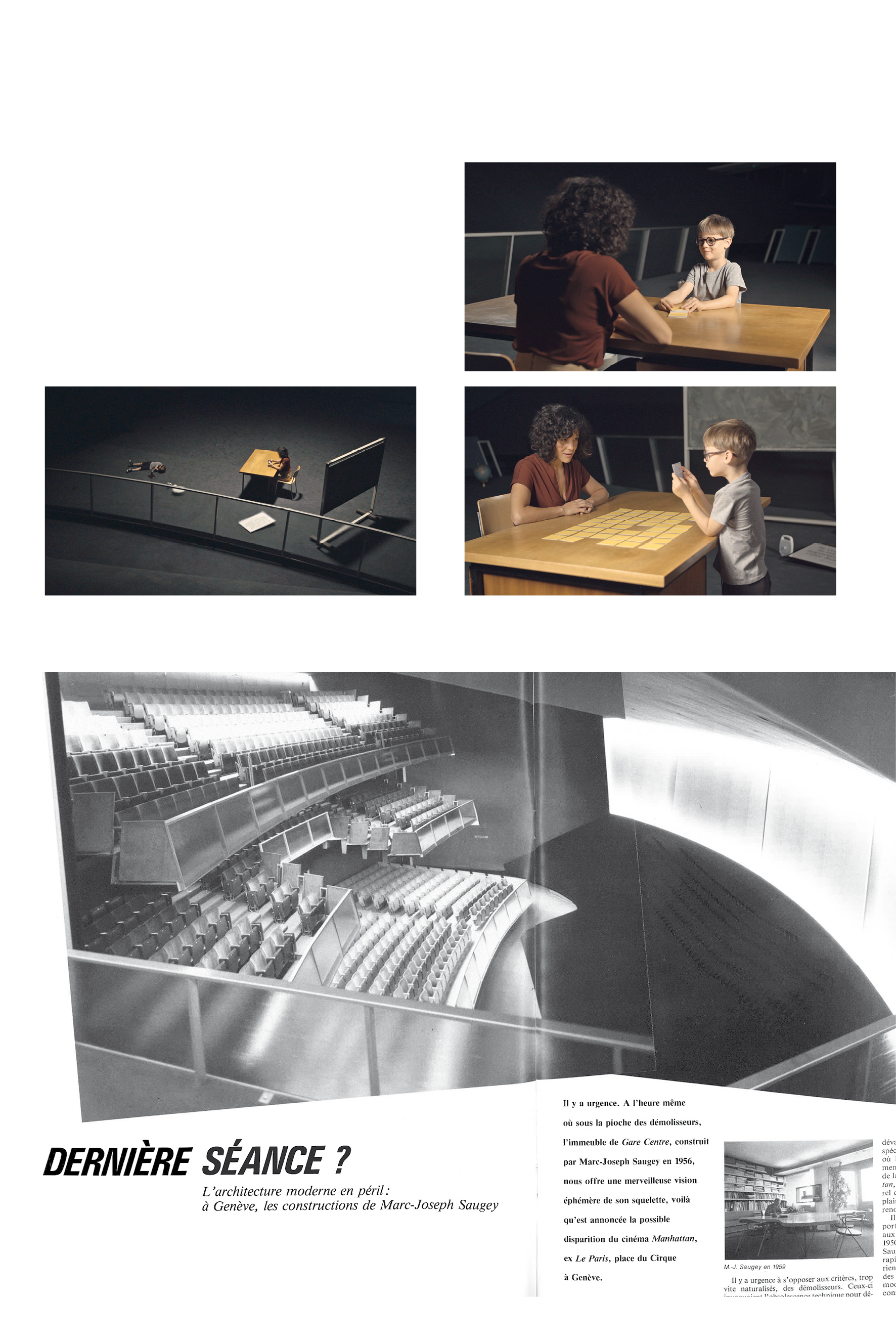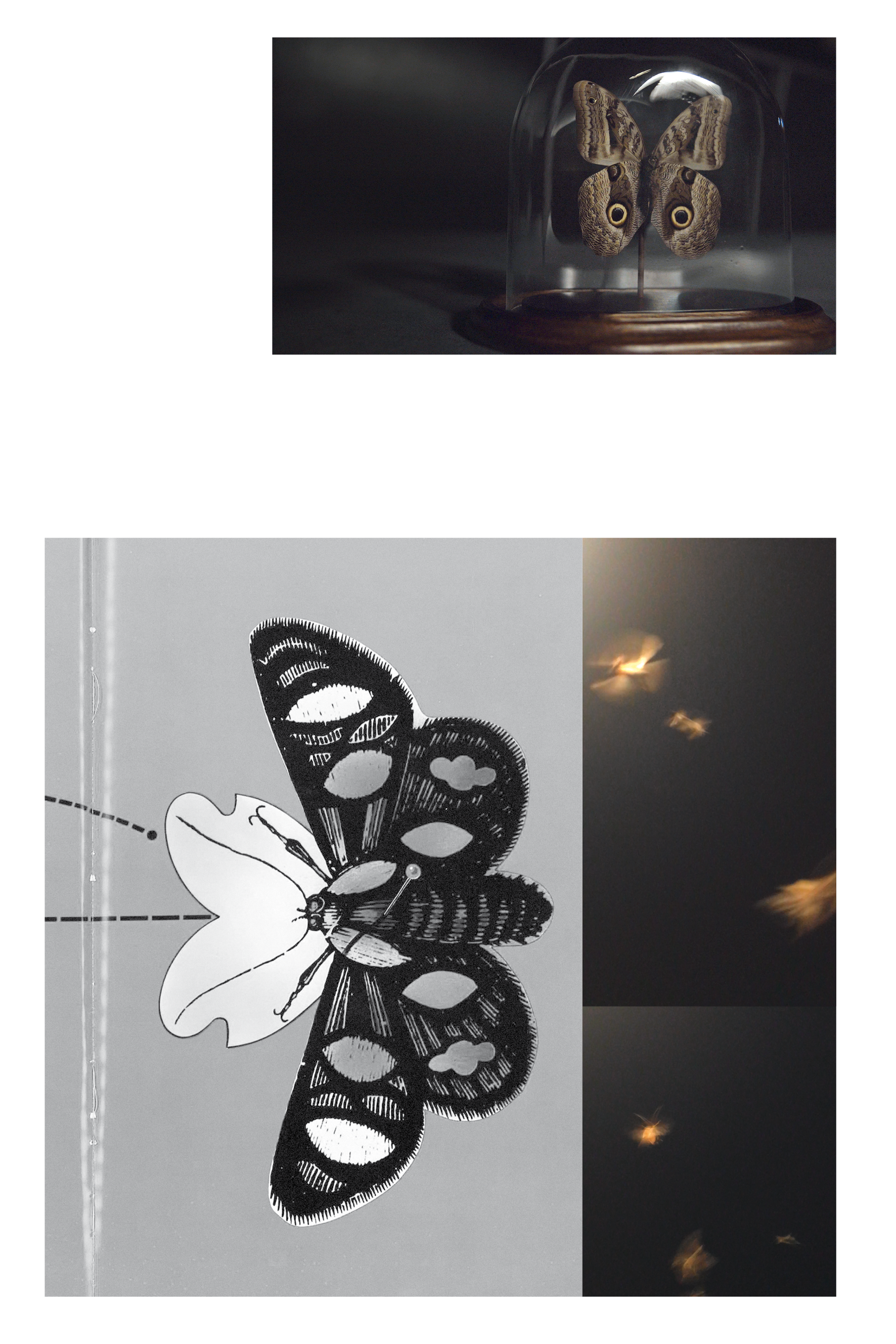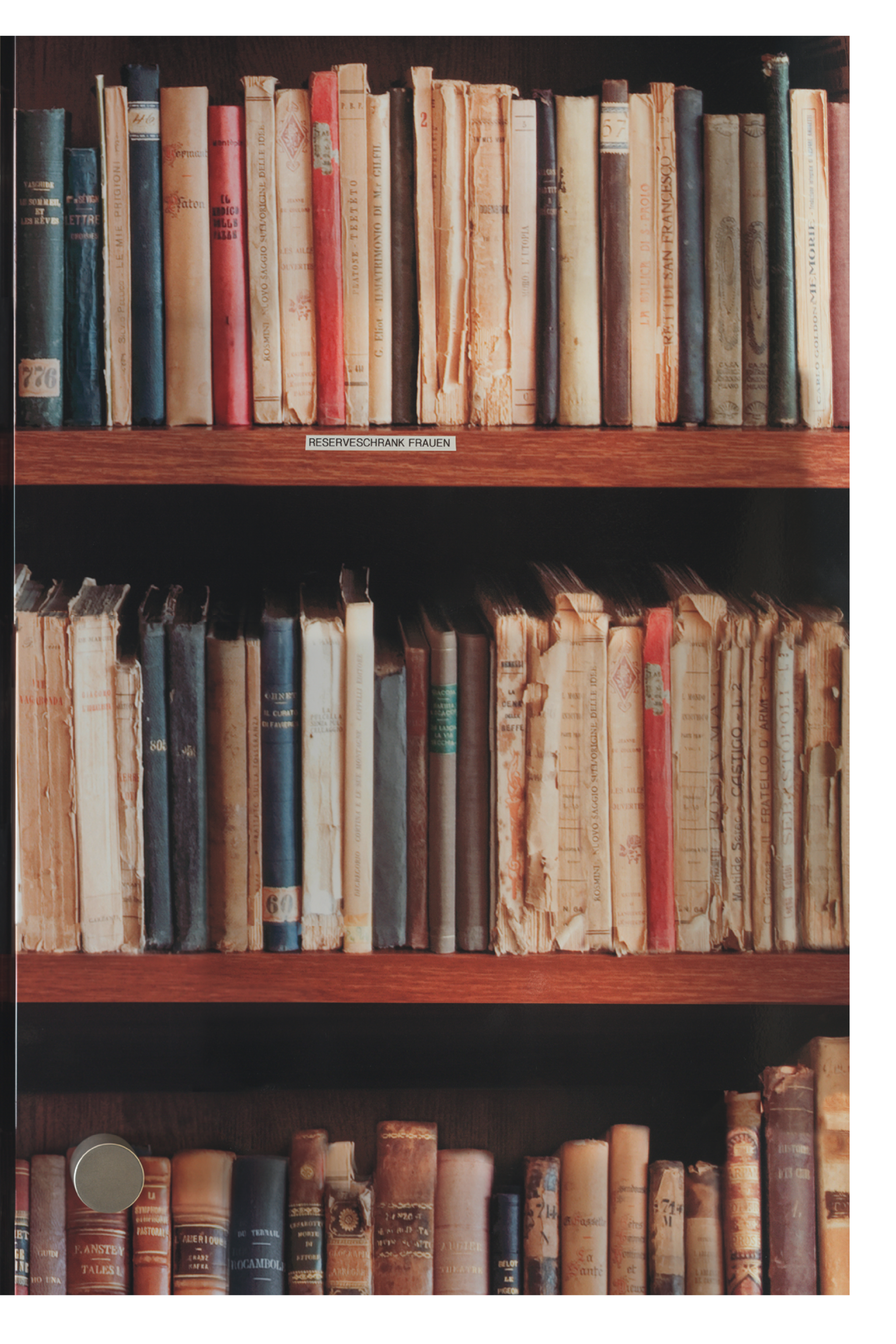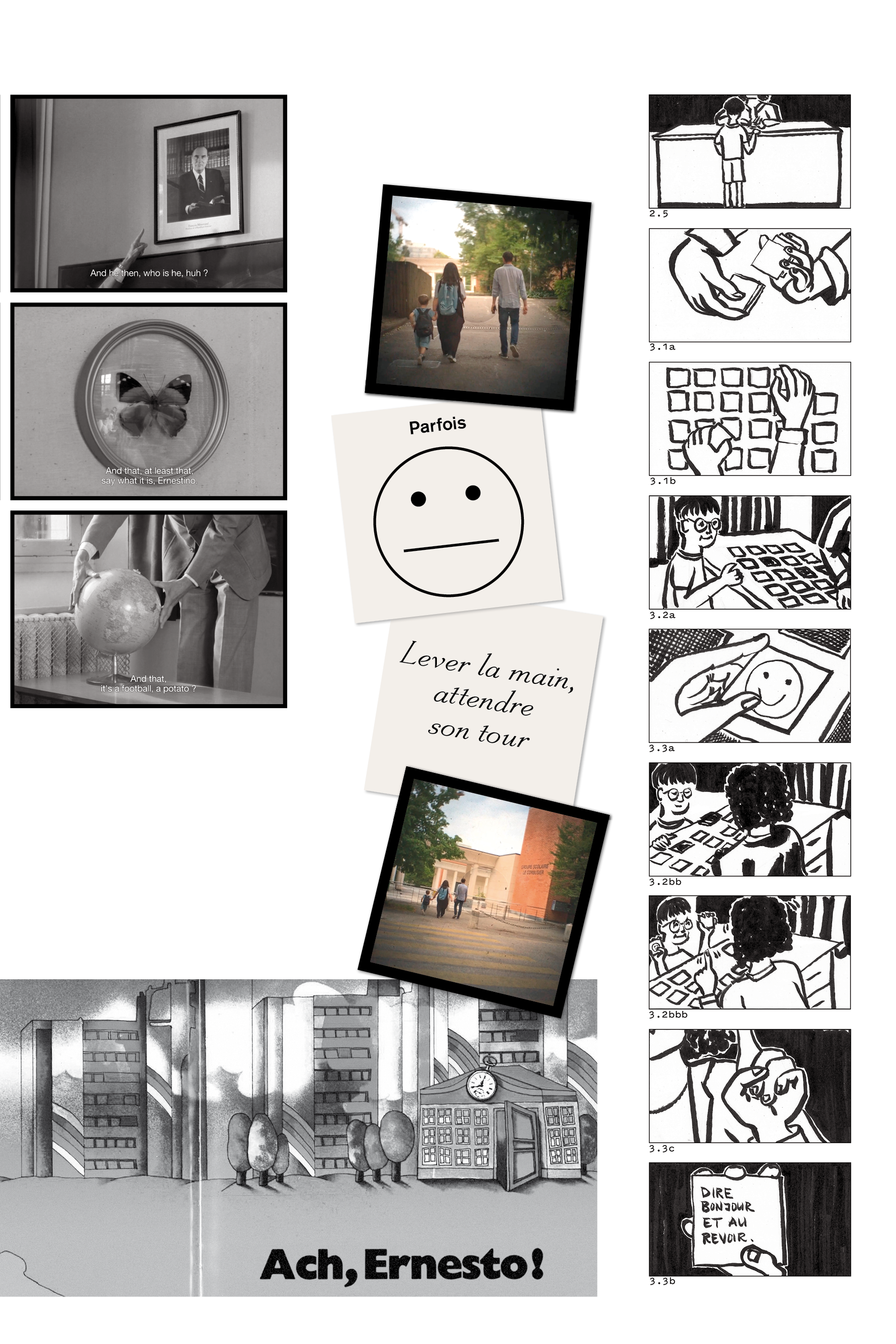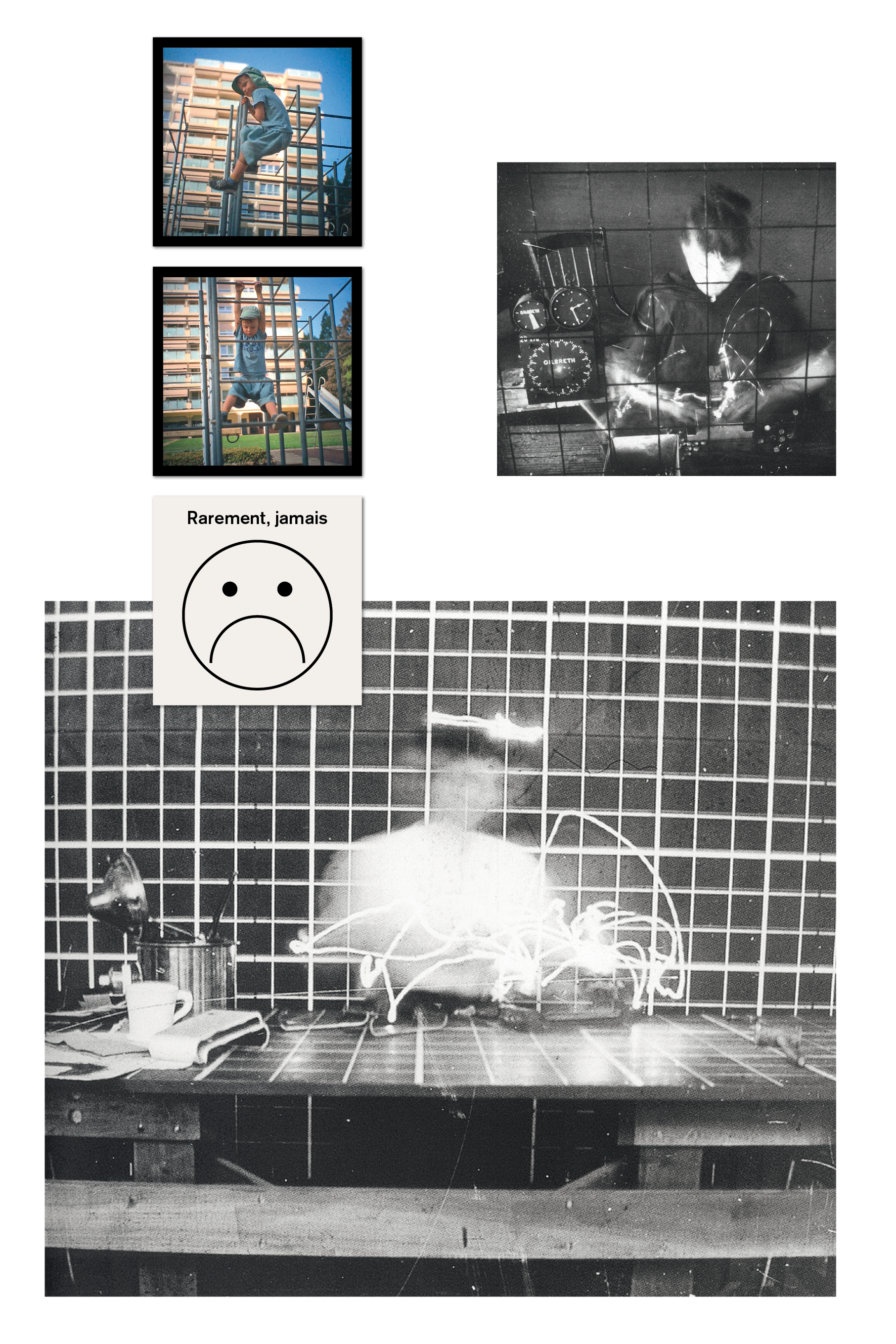As a final experimental set up, an installation seemed fitting, as it would enable me to test out the montage approach I had chosen [J is for Juxtaposition] in a physical space, going beyond film techniques. Realizing the installation as a public exhibition in an art space141 required me to articulate the motifs I had been developing, so that the montages of the film could be more than research instruments, instead becoming recognizable as research results.
Creating asynchronous experiences in a specific situation, using two films running at the same time in a room, for example,142 focused on the research interest in asynchronicity as an instance in which viewers would be consciously aware of ‘not being able to see through’ and would have to deal with the excessive demands of the exhibition’s physical components. I had invited several groups of people to visit the installation and analyze its reception, and/or to view the film with a subsequent discussion and evaluation.143 The viewing conditions (light intensity, noises, sound quality, image size, seating, etc.) are combined together as a spatial composition, meaning that they are strictly controlled, in contrast with the digitally published film, which can be watched in very different ways. It was this that enabled the installation to offer a sense, using feedback, of the limits of visitors’ attention and the points of reference which they found significant.
The installation worked by dividing the space in two. Through a doorway in the wallpaper in the anteroom [S is for Shelves, for Socks], visitors reach a second room; this one is dim, and the floor has been covered with a carpet. On the opposite side of the room is a wide seat which looks like a bed. In front of the back wall through which we enter, which is bare on this side and looks like a piece of scenery, hang a projection screen and a flat screen, both the same size. On the flatscreen, Jeux impairs is being shown [E is for Emoticons / F is for Fugue / L is for Loopholes / T is for Tabletop]; the sound is amplified over the speakers, so that the voices and sounds can be heard in the room. On the projection screen, a montage is shown from the filmic research journal, which is a work in progress preceding the film-essay, already using double image montage, i.e. two images side by side. The sound, mainly a voiceover and occasional noises, can be heard using headphones which are provided. The occasional noises from this montage are played at the same time over the speakers in the room as well, interfering with the sound of the other video.
The films are synchronized to run in two loops, with Jeux impairs repeating itself three times in the time in which the double-image montage of the research journal is shown once. This timing was designed in such a way that different moments of visual echo or auditory mirroring emerge. In a certain sense, our attention is doubly divided by the two films: first, the viewer must decide to look at one screen or the other, and then the research journal is divided once again through the split screen into two image sequences running simultaneously.
The sense that there were rooms within rooms and films within films meant that already when they entered the film installation, visitors experienced some disorientation or were overwhelmed: many simultaneous images, the choice between headphones and sound from the speakers, the feeling of entering right in the middle of something. According to their feedback, it was only after considerable time spent concentrating on one film or the other that viewers were prepared to focus their attention on discovering visual or auditory connections between the two works.
With the installation, I tried to construct a setting which would open up space for visitors’ own associative thoughts [D is for Denkraum]. The challenges and demands of the installation – connecting the elements with each other and dealing with the simultaneity of the two films – raised questions, in the implementation and evaluation of the conversations about visitors’ experiences, about the connections between content and form, temporal experience in film, and the conditions for concentration.
Organizing the research material in an installation showed me the potential for connecting the thematic content with the spatial dimensions of the installation.144
As a result of this analysis of the installation experiment, I focused on developing the film-essay further, using the filmic research journal as a basis: insights drawn from the installation flowed into the double image montage, in order to constitute the format within the film as a situation which uses spatial aspects to create possibilities for viewers to think about and feel asynchronous experiences in complex ways.
The discrepancies in temporal perception which are shown in my case studies arise in specific spaces. The school room in which the boy doesn’t want to obey the rules of behavior; the bedroom, in which the cycle tracker generates data during sleep and where, hypothetically, the attempt will be made to conceive a pregnancy during the “window of fertility”; the common room in which dementia patients are entertained with furnishings and room atmospheres and partly also with scenery such as a model train compartment, were the spaces of my investigation, even if most of them could not be entered by me, at least not with a camera. Instead, I filmed and observed the surrounding rooms which formed a counterpart to the ones which could not be shown: the children’s playroom, the playground, the open plan office, the grounds of the care home, which were undergoing a transformation. The temporalities of these spaces – playtime, working hours, times of upheaval – invade, in turn, the rooms named above, in which temporal regularity, order, and quiet are required. As I thought over these observations, I realized that asynchronicity comes into play in the fields being researched in a heterotopic manner: the room separates itself slightly from its assigned purpose as a school room, a bedroom, or a common room, and alien temporalities allow other rooms to take up space (in thoughts, emotions, movements), implanting themselves or superimposing themselves. Thus, for example, for Jacob, the classroom may become a playroom and vice versa, while users of the fertility tracker can make their bedrooms simultaneously into places where data are produced and reproduced, and the common rooms of the dementia patients become spaces of memory and illusion…
Studying the heterogeneity of temporalities means making discrepancies visible which emerge in simultaneity. For this, the time-based medium offers various techniques of montage, such as that of cross-cutting, parallel montage or, more generally, nonlinear narrative methods. But as ‘vertical’ as montage is, it still implies that one thing follows another. In order to attend more deeply to the individual images and their possible relationship with each other, from time to time I had to take them out of the flow of the shining surface, hold them still, place them next to each other. Let them rest. I made freeze-frames and printed them on A6 index cards. Arranged on the table or sorted into different cardboard boxes, comparing the printed images became an important working method which in turn fed into the moving image montage of the emerging film-essay.
This resulted in experiments using several image channels at once (split screen, multi-channel, or overlaid images). This approach had two decisive effects on my research process: firstly, the spatial moved into the foreground, as images were juxtaposed and at the same time the position of the viewer in these constellations was incorporated more actively [J is for Juxtaposition]. From my experiences with this, I came to a second realization: through relational seeing, our attention is trained to patterns, parallels, similarities, and differences. Through the sensibility developed in this way for (audio)visual (a)synchronicities, motifs emerged which were embodied in the material, which enable new experiences of temporal perception and orientation. Some motifs are trivial: trees [J], windows, calendars, holes [L], reflections, weather [W], train journeys. Other motifs, those which encompass different activities, were more complex: archives [A], encounters [B], rituals [R]. Collecting and configuring the emerging motifs made it possible to encourage unexpected and unfamiliar observations in my thought process: following the method of the index-card box,145 I learned to see the motifs as an ordering structure encouraging interconnected, ‘three-dimensional’ filmic thinking.
